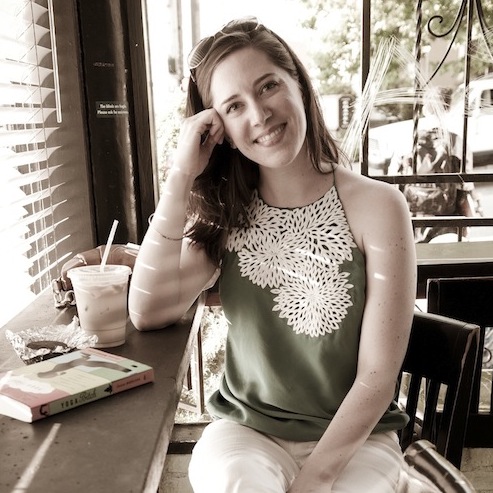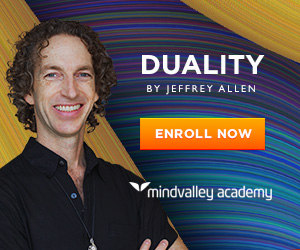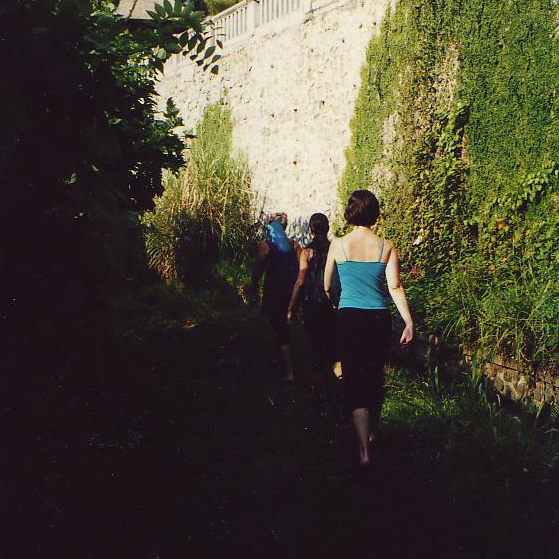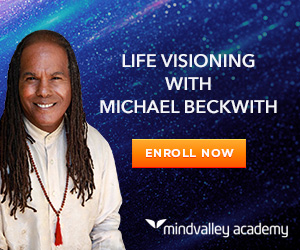Suzanne Morrison, author of Yoga Bitch, takes us back to Bali where she explored spirituality, what yoga means to her, and the purported medical benefits of drinking your own urine.

What are you reading right now?
I love that this is your first question! It’s my favorite question. Let’s see: I’ve been on a Shirley Jackson kick, reading and re-reading her short stories and memoirs and novels. I’m constantly reading Rebecca Brown’s work (start with the gateway drug The Gifts of the Body and then meander from there). Claire Dederer’s Love and Trouble and Matt Gallaway’s #GODS are both amazing. And I just started Neil Gaiman’s Norse Mythology.
I love the way the book is formatted—with a combination of present day essays and in-the-moment journal entries. How did you come up with this format? Why do you think it works so well for this story?
I had struggled with how to tell this story for years. A spiritual journey is so personal, the struggle is sort of hushed and unseen. We need to be inside the character’s head to really experience the sturm und drang of it all. I’d been flailing about for years, writing it as a novel, trying to tell it in a straight linear fashion, and then I woke up in the middle of the night after I’d all but given up on it, and I had an idea: If I did write it as a memoir, I wanted it to be a dialogue between the present and the past, between perspective and no perspective. Memoir is uniquely suited to that task, and suddenly the challenge was appealing. When dreaming up how to recreate my life without perspective, there was only one way that really worked: the diary format, broken up by essays from the perspective of today.
Writing diary-style can be a very intimate, personal experiences. Was it hard to share the story in such a personal way? What hurdles did you have to face when writing such an intimate and no-bullshit reflection on your experience?
A friend had suggested to me years earlier that I write Yoga Bitch as a diary, but I couldn’t imagine writing my story in diary entries without it starting to look like my actual diary, which was an unholy mess of narcissism, self-loathing, and sex dreams that I couldn’t imagine being interesting to anyone but myself. But once I came around and saw the usefulness of the structure, I had so much fun. The biggest hurdle was also the form’s strength: that I couldn’t insert perspective into the diary. At first, I was like: oh jeez, I’m going to look like such an A-hole. But then I thought: well, that’s the whole point. It became sort of thrilling, to just let that girl be who she was without me butting in to say “I’d feel very differently about this two months later, but for now I thought I was the most enlightened girl at yoga camp.”
At first, I was like: oh jeez, I’m going to look like such an A-hole.

Your feelings toward Indra throughout the novel are something many yogis can relate to; what do you think causes this near-reverence of our yoga teachers? What are the pros and cons of having a guru-like figure in your life? Have you found any teachers who serve this role since Indra?
I think it has a lot to do with how powerful yoga can be, particularly when you first start practicing. A great teacher can really change your understanding of yourself, your body, your spiritual life—I mean, it’s a big deal, having a great teacher. We’re so closed off from our bodies, and having a teacher act as your guide to discovering how much emotion is trapped in your body and how good yoga is at ferreting it out—that’s pretty amazing. I haven’t found another teacher since Indra. It’s not really my nature to seek out gurus or mentors, really, though I have a great many people in my life who I’m always learning from. But Indra was an anomaly, and she came into my life at exactly the right time for me to be open to this kind of relationship.
The pros are that a guru really can teach you a great deal, and help you get over yourself, ideally. Cons are all around us: they fuck their students, bully them, find new and shady ways to part them from their money, in general they act one way while being something entirely different. The yoga world has taken a lot of hits in the last decade due to teachers abusing their power. I have a small amount of sympathy for these teachers; I think it could be very easy to become that if people were constantly looking at you like you were enlightened.
So… piss-drinking. Or rather, “urine therapy”. As much as you implied in your journals it would, it never really became a part of your daily routine. What would it take for you to drink a mug of your own urine again?
Cancer?

Let’s talk about your kundalini rising experience (I mean, come on, how can we not?). It’s something a lot of yogis strive for; do you find yourself longing for a repeat of the experience? Have you ever managed to recreate the feeling since? Now that it’s been years since the experience, what lasting lessons did it teach you and how do you think about it when you look back on the experience today?
The most important thing I learned from the whole kundalini experience-thing was that my teachers were right: I needed to let it go or it would actually hold me back. The same is true of a really amazing day of writing; if I start the next day expecting to have another day like that, I’ll end up pulling my hair out in fits of self-loathing. It’s so hard to start each day at my desk, or each yoga class, without expectations that what happened before will happen again. It’s so, so hard.
The most important thing I learned from the whole kundalini experience-thing was that my teachers were right: I needed to let it go or it would actually hold me back.
Apart from that, the thing that started in Bali, and maybe was connected to the Kundalini thing, or maybe not, was that I can slow myself down when I get stressed. I’m better able than I used to be (as in: still not perfect or even great) at not immediately reacting, but slowing down, staying inside the stress, treating it in a more exploratory than judgmental way. I think this is the work of my life, some days. To not fly off the handle the second I’m upset or giving in to outrage, but to slow down. This is especially hard where politics are concerned, or family troubles.
One of the things I love about your book is the way it challenges the idea that there is a “right” way to do yoga. What are your thoughts on the “yogier-than-thou” attitudes that can manifest in the yoga community? Do you think there is a single path that is more yogic than another?
Well, yes. The path in which you keep an eye on yourself. The yogier-than-thous are not unlike the bad priests in the Catholic church, one of whom I grew up with, who was so flipping sanctimonious from the pulpit, but privately screwing women and girls in the congregation. We’ve certainly witnessed that kind of thing in the yoga world in the last decade. (And long before that, too.) Anytime a person lifts him or herself up as more spiritually enlightened or pure, we should all be skeptical. Whenever a person wants to judge everybody else’s spirituality but doesn’t seem to be able to look within, well—I think that’s a shitty spiritual practice. Especially when it’s mine. So I’m trying really hard not to do that.
But if your thing is bhakti yoga, or jnana, or karma, or if you feel like a better person after doing 108 sun salutations, or if your yoga is just to pay attention to the world as closely as possible? If your yoga is doing corpse pose and then going to brunch and then being, like, a Presbyterian? All of that is awesome. So, no, that hasn’t changed for me. I love that there are so many ways to do yoga.
Have you been on a yoga retreat since? Would you consider it? How do you think you would approach it now as opposed to when you were 25?
I haven’t, but I’ve been longing to do one. Honestly, at forty I’m not looking for transformation or the kind of self-understanding I was desperate for when I was twenty-five. My home, my work, where I live, who I love, these were such pressing issues when I was twenty-five, and stepping outside of them to attend the retreat in Bali was such a good thing to do. I’m still so grateful for that time, and all the conversations I had with my roommate Jessica, and with Indra and Lou, and my other yogamates. Now, honestly, I’d go to get quiet. To stretch out. Not to find myself, but maybe to hear myself better. Daily life can get very loud.
At forty I’m not looking for transformation or the kind of self-understanding I was desperate for when I was twenty-five
How has your yoga practice developed since your retreat in Bali? What does your yoga practice look like today? Do you find you still seek transformation in the same way?
My expectations of yoga are far more practical now, without question. My practice is both more sporadic and more integrated into my daily life. I go to studio classes no more than once a week, mostly because there aren’t very many studio classes I can do these days, given the prevalence of Power-this, and Hot-that in the yoga world. I loathe a hot yoga class; I’m a German-Irish mutt and those temperatures just make me feel nauseous. And Power-anything is not my jam. I’m more of a soft-blanket and bolster kind of yogi. So anything restorative, yin, for the elderly or injured is kind of more where I’m at.
I loathe a hot yoga class; I’m a German-Irish mutt and those temperatures just make me feel nauseous. I’m more of a soft-blanket and bolster kind of yogi.
In truth, I have tricky wrists, and most yoga classes these days, whether vinyasa or power or whatever, keep us all in downward dog for far longer than I can manage. But I discovered a Forrest Yoga class at my studio in Seattle and I absolutely love it. Precious little downward dog, so I don’t feel injured after every class, and such subtlety in the way we hold the poses. I’m totally sold on it. I love holding a pose for a long time; it brings up and releases all the stress reactions.
But at home, where I spend much of every day sitting at my desk writing or editing or reading, I do yoga all day long. I wasn’t even really aware of it till recently, but I find myself in trees and half-moons and warriors while waiting for my tea to steep, or if I’m spacing out. I end up on the floor a lot (writing memoir can be mortifying, and I find I seek a lower ground to get away from what I’ve written) and that’s a good time for a plow or a cobbler or something. Or the evergreen pose: Corpse, with Weeping.
I find myself in trees and half-moons and warriors while waiting for my tea to steep, or if I’m spacing out.
Sometimes it takes years for us to realize what we learned from an experience; what lessons have you learned from Bali after the fact? Are there ways in which that experience continues to teach you?
Mostly, I think, in the way it helps me slow down when I’m stressed. There’s a direct link for me between holding a pose long past my comfort level and being in an uncomfortable conversation or situation. The more I practice sitting with discomfort instead of reacting to it, the better. I’m still crap at dealing with stress, but less so, sometimes, than I used to be.
And the biggest thing for me was discovering how orthodox I can be in my thinking! That I tend to think that a spiritual practice or religion is bullshit if it has one bad adherent or if its adherents are imperfect—that was a big discovery for me. That my spiritual pride was so great no actual existing spiritual path was good enough for me. But any spiritual activity that exists on earth was designed by humans, and so every single one of them is going to be flawed. Sometimes my desire for transcendence is so strong nothing on earth will do. I learned that in Bali, and I think of it every time I feel judgmental, which is often.

A lot has changed in the yoga-world since your retreat. In what ways have you seen the yoga community change? You mention while living in NYC that yoga had ceased to be a spiritual practice and become an industry. Can yoga still be a spiritual practice or has American capitalism made that impossible?
I think it can be, but it’s harder—in Seattle, anyway—to find studios that are interested in the spiritual aspects of yoga, which is unfortunate, for me anyway, because those are the most interesting aspects. I love how the poses teach you many of the spiritual principles, but you kind of need a teacher to point them out to you if you’re not familiar with them. There are still great studios here who look at yoga in a more holistic way, but all the newer and packed studios are pretty hardcore about fitness, full stop.
If there was a yoga pose or meditation practice that described you, what would it be and why? Has this changed over time?
Well, Corpse was and will always be a favorite. But the pose I find myself craving is Half Moon. I like how it flips my perspective of whatever space I’m in, both physically and emotionally. I get so tired of my own limited perspective, all my habitual responses, all the knee-jerk-iness I live with. It gets really boring. So it’s nice to see things differently, if only slightly.
What are you working on at the moment? Is there anything we should keep our eyes out for?
I’ve got one book nearly finished that’s sort of been cooling down for a while, waiting for a final edit, called Thinking Like a Girl—a sexual and intellectual coming of age story. And another project is in the works, called The Myth of Creation, and I’m not quite ready to talk about it yet—it needs to live in the dark a bit longer—but it has to do with motherhood and childlessness, Catholicism, and the artistic process, and I’m having the most fun ever writing it, if by “most fun ever” we mean spending a lot of time staring into space or crawling under my desk to hide. (I kind of do mean that.) There’ll be some yoga in this one, too.
What else have you written? Where can we find it?
You can find my short fiction online at American Short Fiction, and in journals, and an essay I wrote about yoga and my mother’s breast cancer diagnosis was published in the anthology Going Om (along with my beloved Claire Dederer and a host of other awesome writer-yogis). You can find some of these on my website suzanne-morrison.com.








